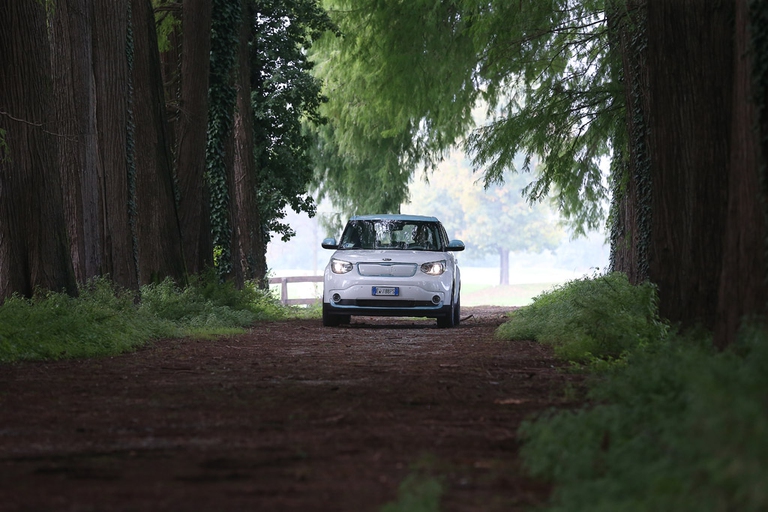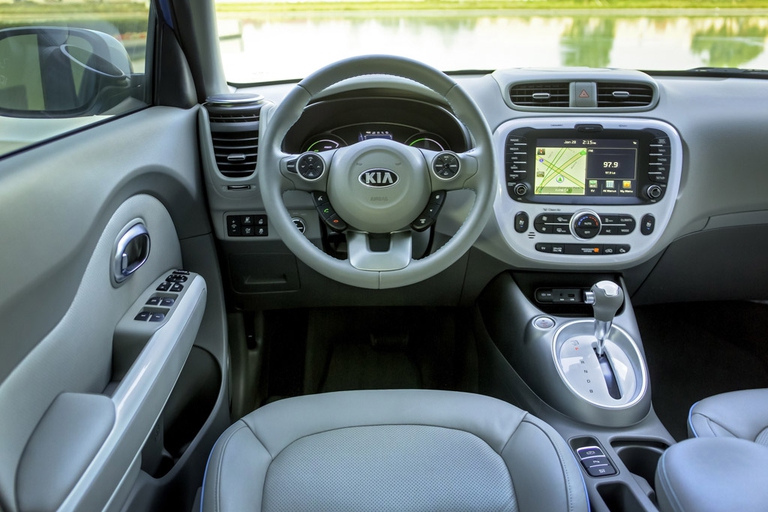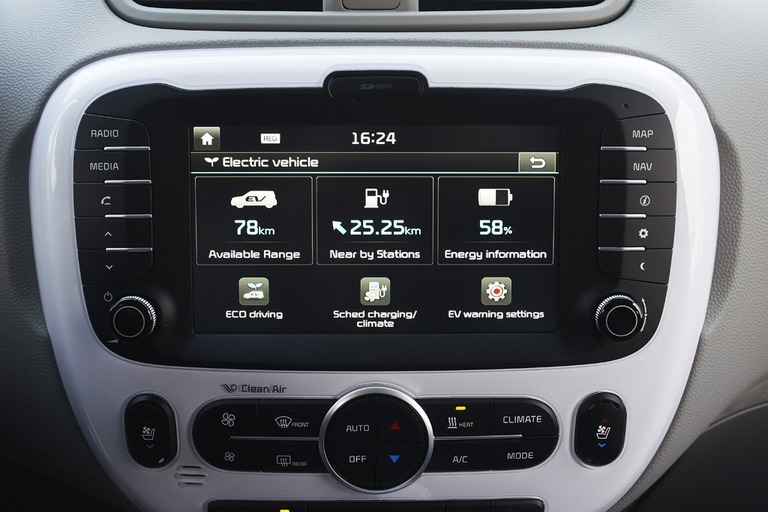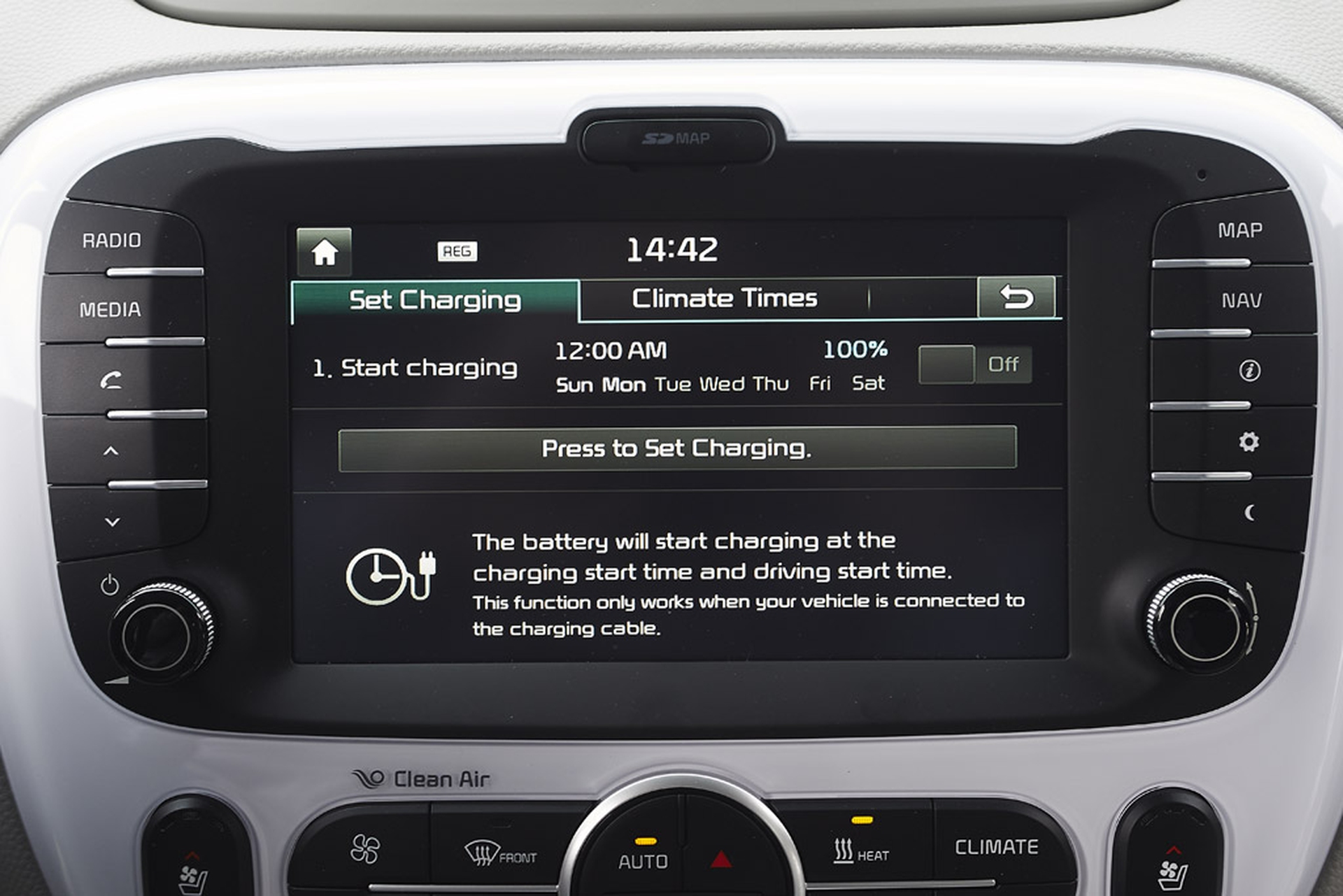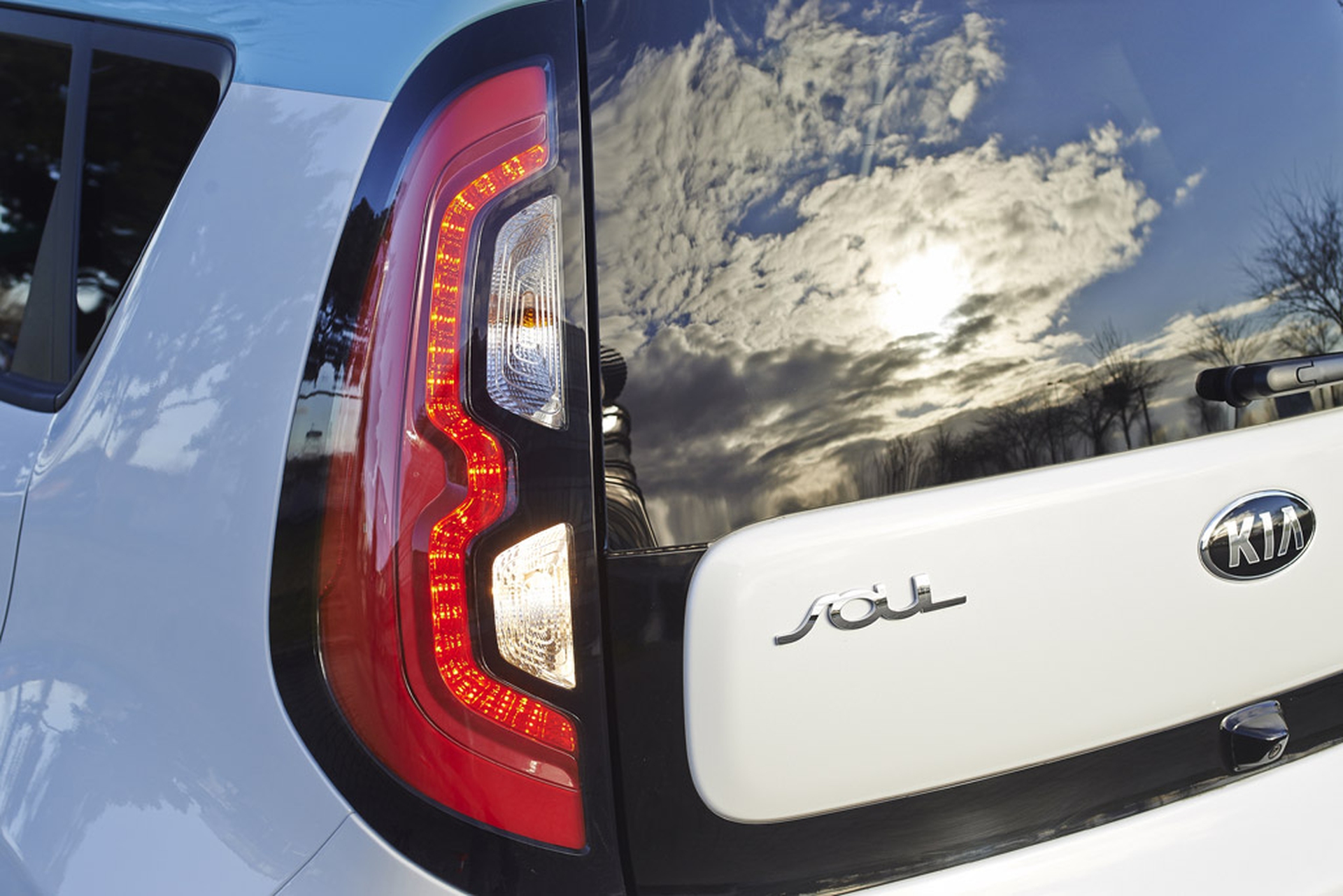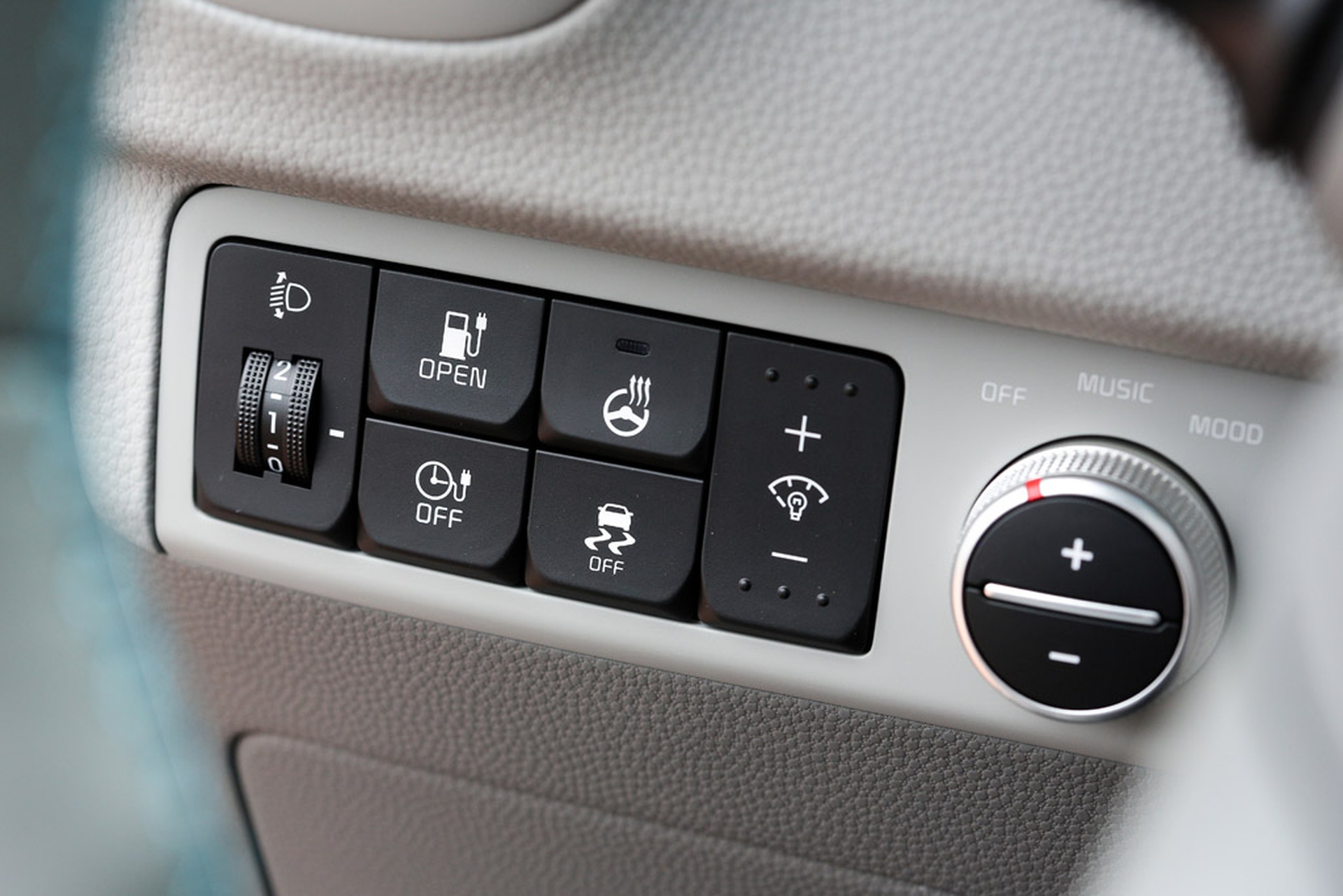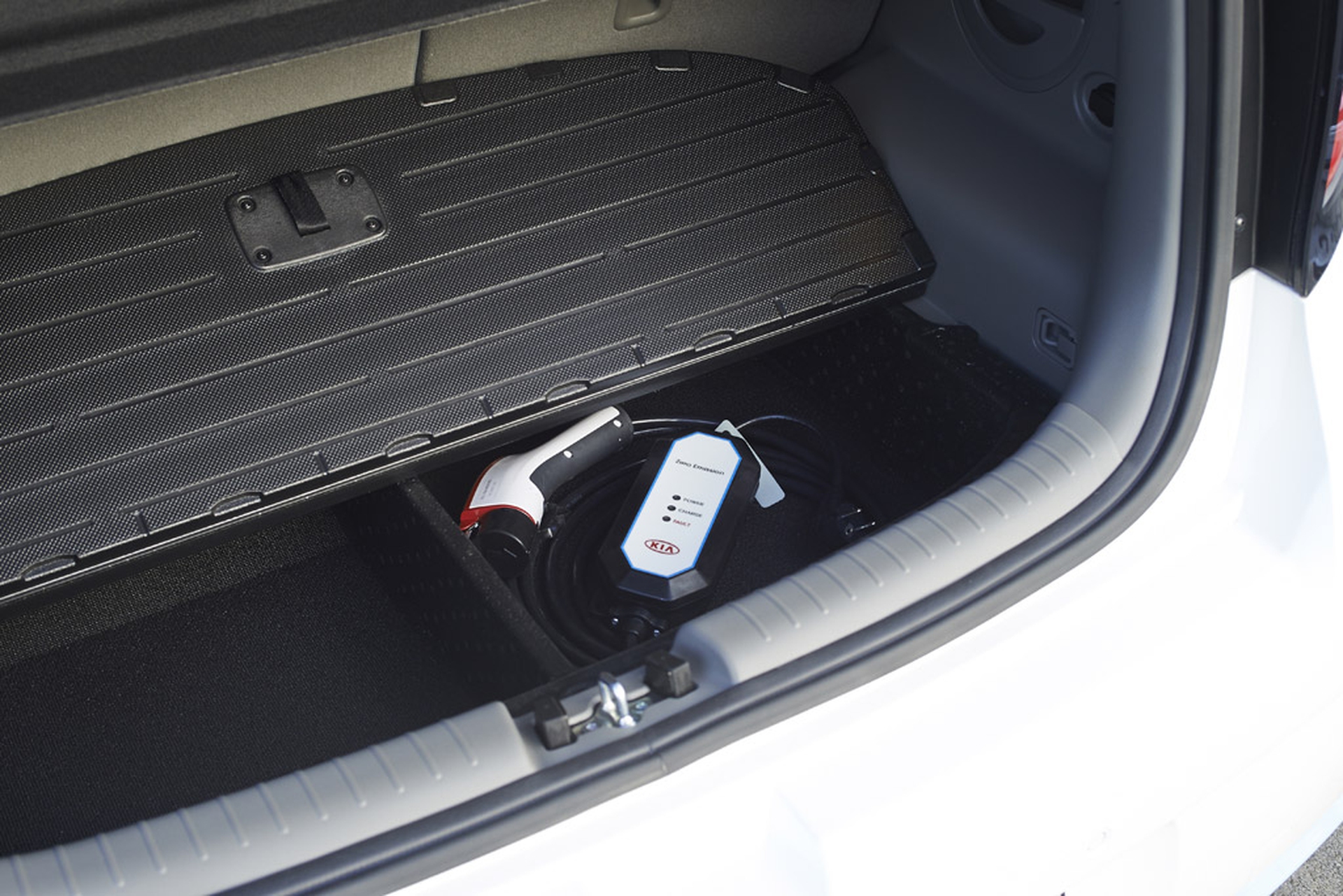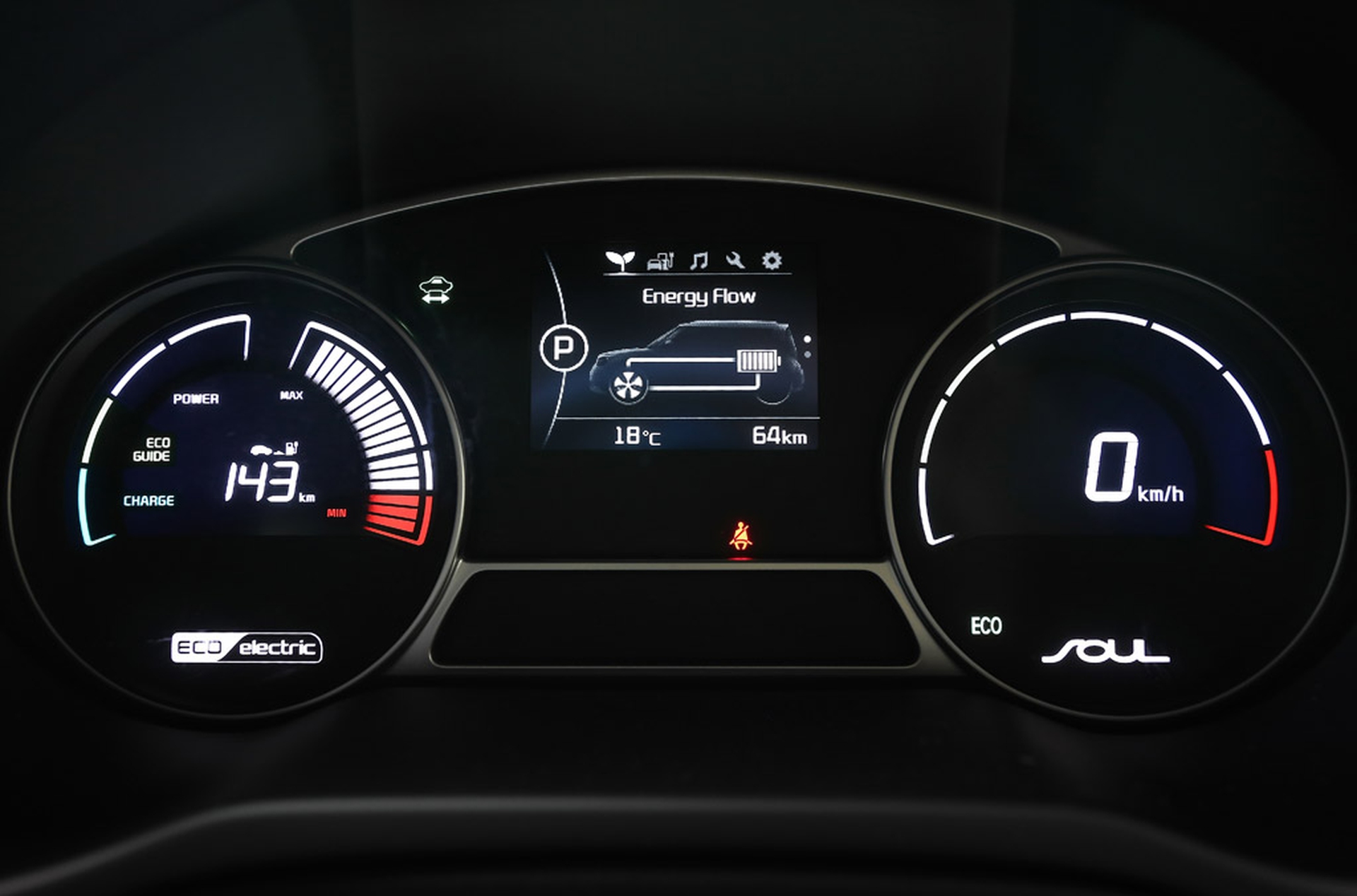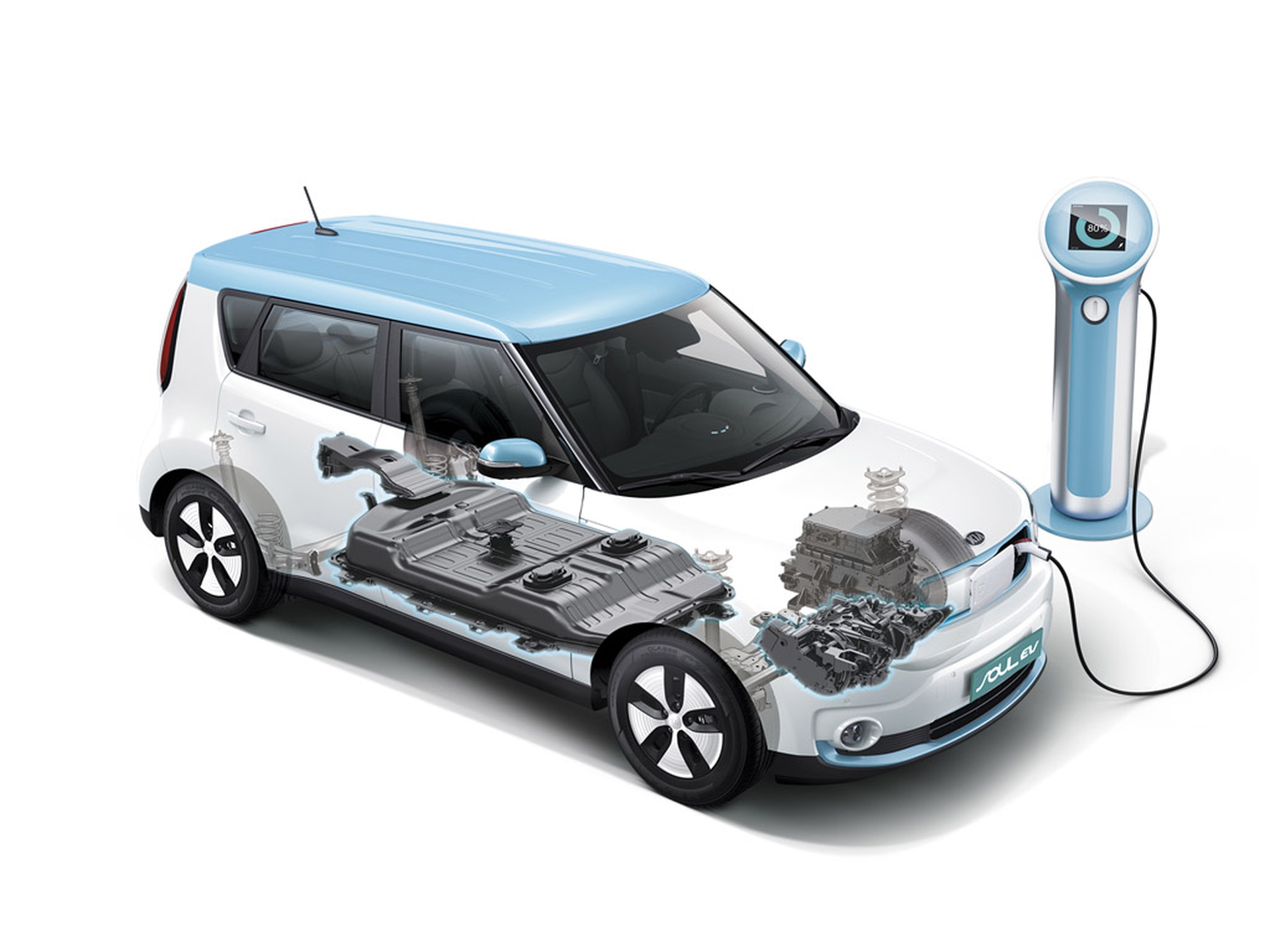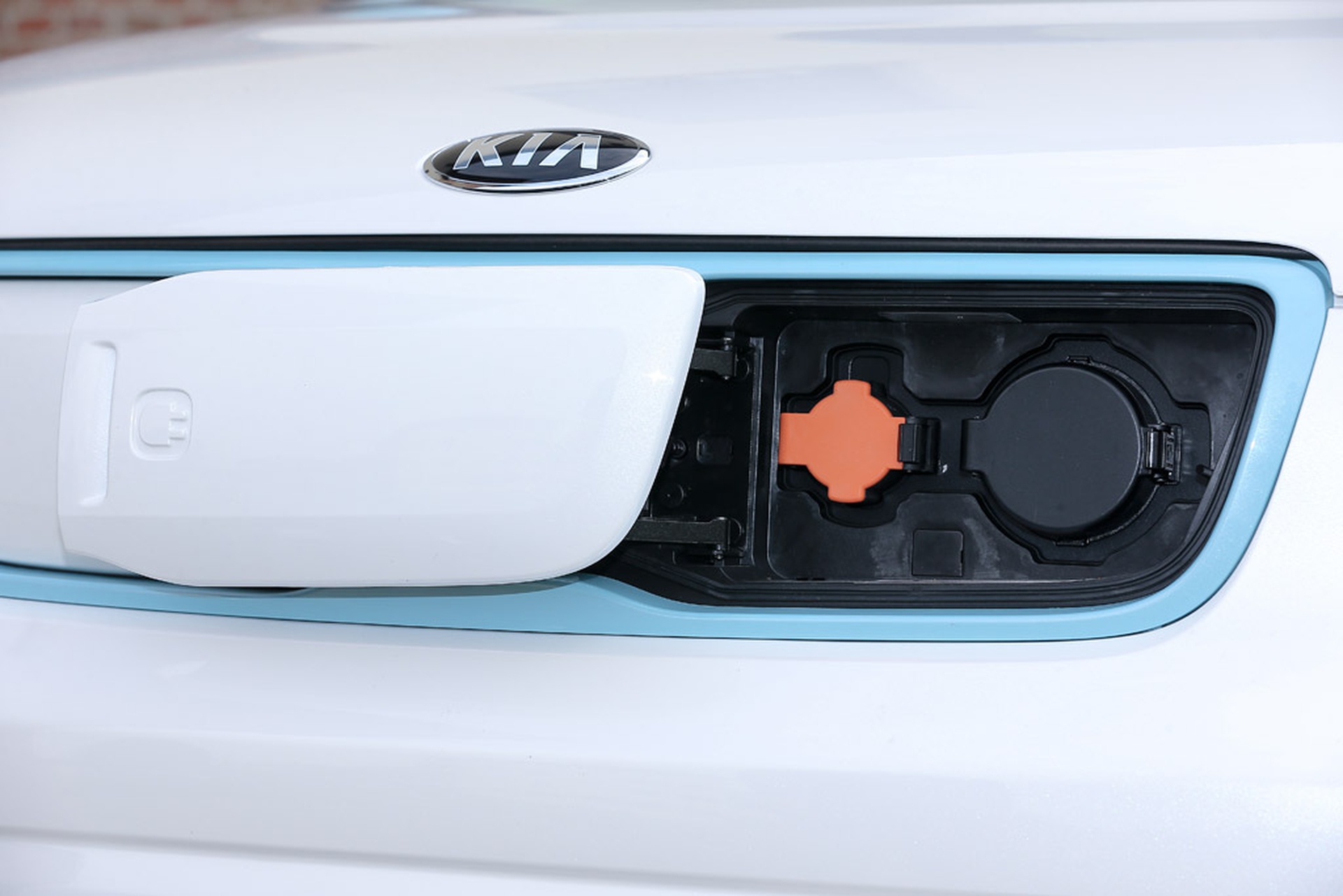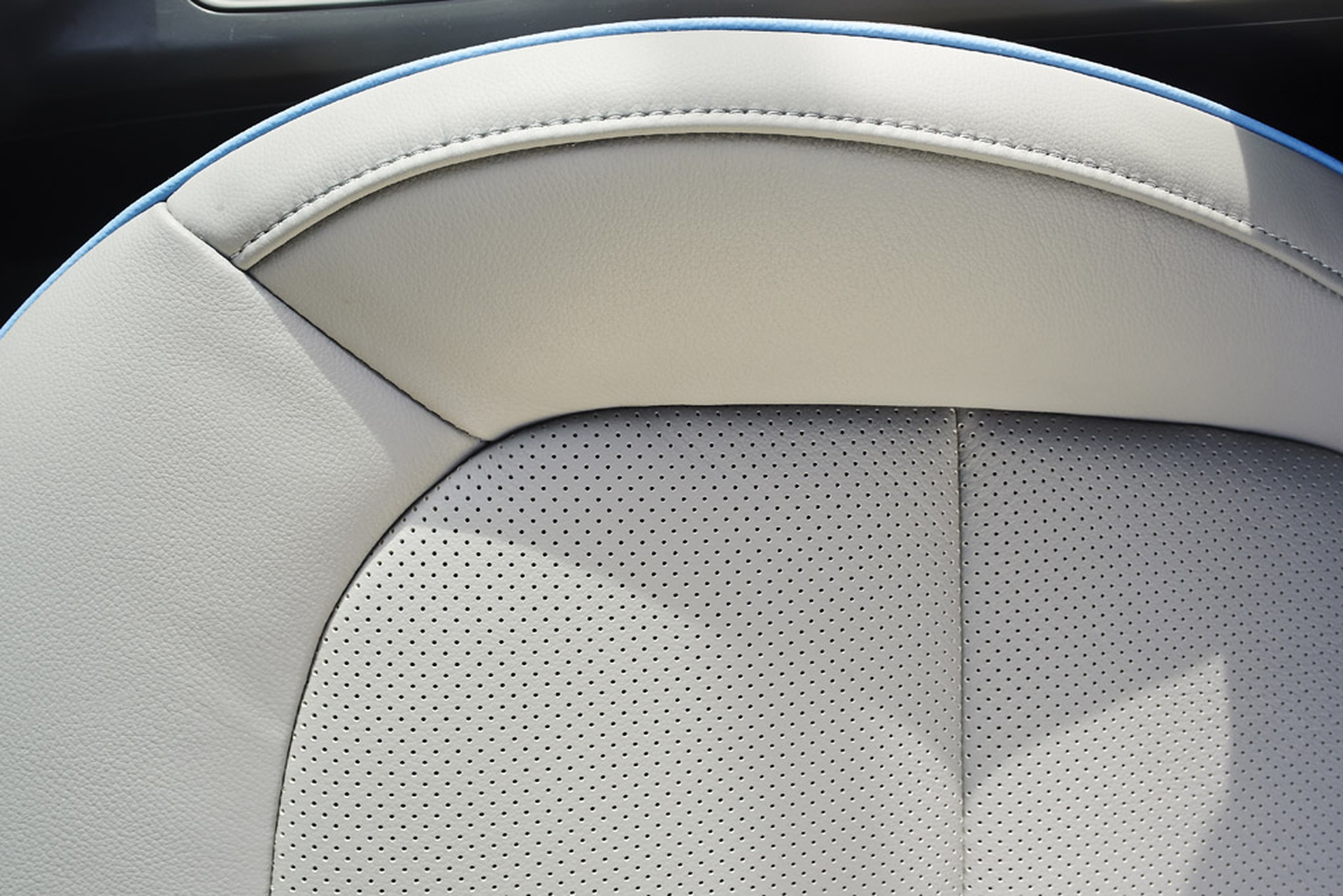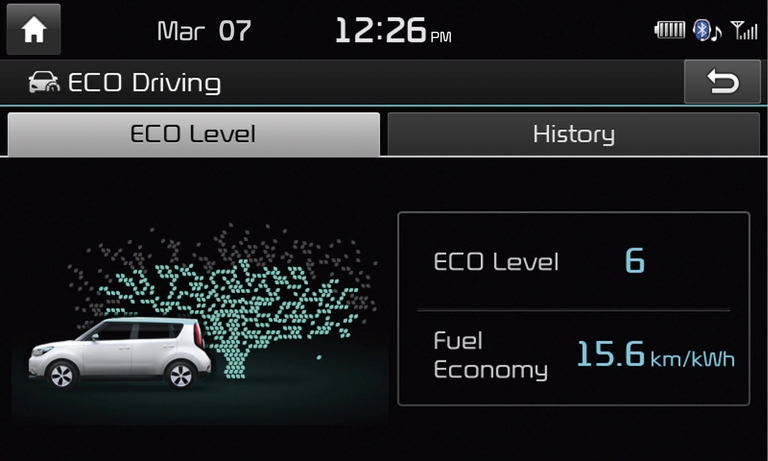When it was (re)born in 2014, the Koreans intended for it to become the anti-Mini. Square, weird, original. For it to stand out. Then the Kia Soul’s journey changed. After the petrol and diesel versions (which are still on the market), the electric conversion is here. The Soul Eco Electric easily rid itself of fossil fuels,
![rating_MR_5]()
When it was (re)born in 2014, the Koreans intended for it to become the anti-Mini. Square, weird, original. For it to stand out. Then the Kia Soul’s journey changed. After the petrol and diesel versions (which are still on the market), the electric conversion is here. The Soul Eco Electric easily rid itself of fossil fuels, maintenance costs and the burden of emissions. And keeping its cubic structure intact it also conserved the practicality of its interiors, which in the meantime became “organic” thanks to the bioplastics the carpets and upholstery are made of, for example. “Organic” like the dashboard’s digital tree, which grows green and flourishes when the car is driven following virtuous behaviours.
![Kia-Soul-ECO-electric-(82)]()
What’s different
Compared to the diesel, petrol and GPL versions, nothing seems different from the outside: even in its electric form the Soul maintains the shape of a small SUV, high off the ground but compact; with four comfortable seats and a boot door made for packing in a family’s luggage (the batteries, hidden under the car, slightly reduce the depth of the boot and height of the back seats). It even only weighs slightly more (90 kg). The price, however, has changed, almost double compared to the most economical model. And certain aesthetic details have also changed: the alloy wheels and bumper improve aerodynamics, the electric charging flap on the front (it lights up when opened to facilitate attaching the charging cable even in the dark) and LED rear lights to save electricity and improve safety at night. The colour has also changed, a bitonal combination of candid white and a soft blue reminiscent of a summer sky. But the major differences remain the invisible ones: the lithium-ion batteries and silent electric motor.
![Kia-Soul-EV-(4)]()
Technological innovation
The Soul Eco Electric moves silently thanks to a 81.4 kW electric engine (equivalent to 110 hp to draw a comparison with “normal” cars). It’s fuelled by a lithium polymer battery pack with a capacity of 27 kWh and 90 kW. Maximum declared driving range is of 210 km. The automatic shift’s “Brake” function allows the car to regenerate electricity when it slows down or brakes. The Soul offers innovative systems that make its use more practical and “smart”: a system recognises the owner when they’re getting into the car and opens the external rear-view mirrors first and then, after lightly touching the door handles, opens all the doors automatically (really comfortable when carrying bags or packages). In terms of connectivity, smartphones connect to the onboard computer and all you need to do to make a call is say the person you want to contact’s name aloud. Pressing the EV button, the navigator (which has an ample touchscreen) displays useful information such as the nearest charging station, and the autonomy and battery power left. The air-conditioner’s Drive Only function (which includes an ionizer to improve air quality) is also smart as it allows for cooling down or warming up only a section of the car, ideal when travelling alone, in order to save energy.
https://www.youtube.com/watch?v=6AtU-sNdPrI
Savings
The starting price for the Kia Soul Electric is 36,000 euro. There is only one set-up and there are no features to be added. Amongst the standard features are air-conditioning, navigator, a radio with Digital Audio Broadcasting (DAB) and rear-view camera. “Savings” aren’t limited to fuel and the almost total absence of maintenance and servicing costs, as with all electric cars, but also free access to congestion charge zones and discounts for parking in certain countries. On the other hand, the price of the electric model is almost double compared to the 1.6 petrol version.
![kia_soul_details_901]()
Environment
Let’s begin with the upholstery and use of bio-plastics. Aboard the Soul Eco Electric (winner of the Red Dot Award and Best Value in America in the electric/Plug-in hybrid category), the carpets and seat upholstery are made out of materials derived from cellulose and sugarcane. Even the door panels are made of more “ethical” plastic. Apart from the obvious advantage of the lack of emissions, the Soul goes even further to limit its environmental impact: it regenerates current when braking, uses aerodynamic wheels and low rolling resistance tires to reduce friction and the resulting dispersion of energy, and reduces the consumption levels of air-conditioning. And whilst the car is being charged the air-conditioning can be programmed to begin the journey in complete comfort (and without stealing current from the batteries). Speaking of Kia Motors‘ dedication to environmental themes, Move is the name of the annual sustainability report (downloadable here) that tracks the company’s environmental commitment. Thanks to these efforts Kia has for years featured in the respected Best Global Brands ranking.
Driving comfort
To start with, the silence of an electric car is a great source of serenity. On the Soul, the “relaxing” effect is amplified by the outstanding acoustic isolation from the external environment, the sound quality of the hi-fi system, which includes the DAB function that allows for listening to high quality music categorised by genres and almost free of adverts. On top of this, the seats are higher than usual, the external dimensions are compact and parking is so easy it’s a joke (there are sensors in the front and the back, as well as a rear-view camera). In addition to the quality of travel, Cruise Control is a standard feature, Hill Assist Control (HAC) stops the car from going backwards when maneuvering uphill and tire pressure is kept monitored. Security features include frontal, lateral, and front and back window airbags.
![kia_soul_ev_my14_main_seat_]()
Test Drive
Electric cars today are almost exclusively synonymous with use in the city: not so much because of range issues (200 km are starting to become acceptable) but to the lack of charging stations outside of urban areas. Therefore, our Soul was driven mostly in the city of Milan in ordinary traffic, where it demonstrated its exceptional agility. Driving pleasure is derived from a number of factors: excellent visibility, quietness, easiness to park (sensors and rear-view cameras are standard) and light steering. There are also a number of accessories: digital music in streaming and without adverts, vocal commands, opening the door without the use of keys… Or the pleasure of finding a toasty car when you charge it in your garage, thanks to the possibility of programming the air-conditioning (and charging) in order to take advantage of electricity at home instead of batteries on board. Underneath the boot are two cables, one for charging at home, the other for rapid charging at charging stations. Times vary between a few hours to a whole night if using a home garage with the classic “220”. Using the Brake option to charge the batteries when braking is a veritable source of enjoyment. Or the Eco Programme, which reduces consumption levels, though it does require some sacrifices (a lower performance and limiting the use of the air-conditioner). Ultimately, in a week we travelled 150 km without charging the batteries once. Recharging anxiety? Never, or almost never. Just that time we went to the airport out of town… We would’ve reached it without a problem (60 km) but the return trip would have been an issue: consumption levels peak on the motorway and without a charging station at the airport, this becomes risky. Again, though, the problem is one related to infrastructure…
The difference lies in the detail
It’s a virtual tree that allows for monitoring the level of one’s driving style on the same screen as the navigator. The more virtuous the driving (progressive acceleration, use of the brakes to recover current, use of the Eco Programme) the greener the tree becomes, growing new leaves and thriving. A piece of advice: if you want to achieve 200 km of declared range you’d better develop a “green thumb”.
![kia_soul_ev_my14_navigation]()
The alternative
With similar characteristics in terms of space and use, the Nissan Leaf represents the closest option (starting from 24,000 euros). If your budget is higher (over 40,000 euros), the electric Mercedes Class B is also on the table.
Technical specifications
Version: Kia Soul Eco Electric
Price: starting from 36,000 euros
Sold starting from: 2014
Engine: electric (81.4 kW)
Transmission: automatic
Performance: max speed (km/h) 145; 0-100 km/h acc (in secs.) 11.2
Driving range: 210 km
Emissions (g/km): 0
Dimensions (mm): 4,140×1,800×1,593 (lxlxa).
Translated by Mara Budgen
Siamo anche su WhatsApp.
Segui il canale ufficiale LifeGate per restare aggiornata, aggiornato sulle ultime notizie e sulle nostre attività.

Quest'opera è distribuita con Licenza Creative Commons Attribuzione - Non commerciale - Non opere derivate 4.0 Internazionale.


